Best Norman Spirit/Liqueur Types
Calvados is a brandy distilled from apple cider or a combination of apples and pears. The fermented juice is usually double distilled to create the base of the brandy, which is then aged, and finally blended.
The production of Calvados is strictly regulated, and final products are classified according to the length of maturation, with two years being the minimum aging period. The appellation Calvados is divided into three sub-regions that slightly differ in the base ingredient, terroir, and the distillation process.
THE BEST Calvados Fruit Brandies

SPIRIT FRANCE DIFFUSION
Lecompte 18 YO Calvados
IWSC- International wine & spirit competition - Spirit Gold Outstanding 2023
SPIRIT FRANCE DIFFUSION
Foucart VS Calvados
IWSC- International wine & spirit competition - Spirit Gold Outstanding 2023

CALVADOS CHRISTIAN DROUIN
La Fine de Lelouvier
ISC-International Spirits Challenge - Double Gold 2023
Although the true origin of this French herbal liqueur is somewhat mysterious, one theory claims that Alexandre Le Grande obtained the original recipe from a Benedictine monk. Le Grande started to produce the drink under its current name in 1863, and Bénédictine is still produced following the original, secret recipe that includes 27 herbs and spices.
After distillation and careful blending, the final combination is infused with saffron and honey that provide for its typical amber hues and sweetness. Bénédictine is a rich liqueur that displays notes of citrus fruit, spices, and herbs.
Pommeau is a French drink that combines unfermented apple juice (apple must) and apple brandy—traditionally, Calvados is used. The drink is officially classified as a mistelle, a blend of brandy and fruit juice. The production involves fermenting apple juice, adding Calvados, and allowing the combination to age and mellow in barrels.
Pommeau is a full-bodied and typically amber-colored beverage with a fruity character and complex notes reminiscent of ripe fruit, citruses, and nuts. On the palate, it displays stewed ripe fruit and toasted nuts. It is bottled at 17% ABV.
Although Normandy has a long tradition of adding brandy to apple ciders, the commercial production is relatively recent, and pommeau was awarded AOC status in 1991.
Best Norman Spirit/Liqueur Producers
Calvados Boulard is a renowned French producer specializing in Calvados, an apple brandy originating from the Normandy region. Established in 1825, the company is known for its commitment to quality, blending tradition with modern techniques. Boulard uses a variety of apples grown in the Pays d'Auge, a region famous for producing some of the finest Calvados.
Their distillation process, combined with careful aging in oak barrels, creates complex and refined spirits. The brand offers a range of Calvados, from young, fresh varieties to well-aged expressions, appealing to both newcomers and connoisseurs.
AWARDS

SFWSC - San Francisco World Spirits Competition - Double Gold
2024, 2023

IWSC- International wine & spirit competition - Silver
2024

USC- Ultimate Spirits Challenge - Chairman's Trophy
2023
BEST Calvados Boulard Spirits
AWARDS
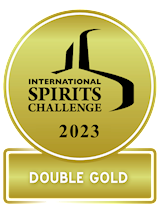
ISC-International Spirits Challenge - Double Gold
2023

IWSC- International wine & spirit competition - Spirit Gold
2020

World Calvados Awards - Best XO
2022
BEST CALVADOS CHRISTIAN DROUIN Spirits
AWARDS

IWSC- International wine & spirit competition - Spirit Gold
2020

IWSC- International wine & spirit competition - Spirit Gold Outstanding
2020
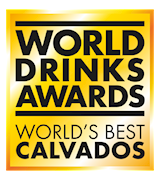
World's Best Calvados - Winner
2022
BEST Château du Breuil Spirits
Père Magloire is one of the oldest and most prestigious producers of Calvados, founded in 1821 in the Normandy region of France. The distillery specializes in creating high-quality apple brandies using traditional methods, drawing on over two centuries of expertise.
Père Magloire carefully selects apples from the Pays d'Auge, renowned for its rich apple orchards, and follows a meticulous double distillation process. Their Calvados offers a wide range of expressions, from young and vibrant to aged and complex, each showcasing rich apple flavors, subtle spices, and refined character.
Armagnac Janneau is one of the oldest and most prestigious Armagnac producers in France, founded in 1851 by Pierre Etienne Janneau in the town of Condom, located in the heart of the Armagnac region. For over a century and a half, Maison Janneau has remained faithful to traditional production methods, combining them with innovations to create high-quality Armagnacs.
It is particularly distinguished by its use of two distillation methods: continuous distillation and double distillation in traditional copper stills, a rarity among Armagnac producers. All production processes, from distillation to aging and bottling, take place within the AOC Armagnac region, ensuring authenticity and superior quality in every product.
AWARDS

IWSC- International wine & spirit competition - Spirit Gold
2024, 2021
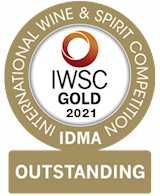
IWSC- International wine & spirit competition - Spirit Gold Outstanding
2021
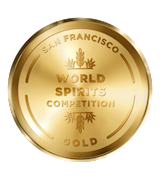
SFWSC - San Francisco World Spirits Competition - Gold
2024
BEST Armagnac Janneau Spirits
AWARDS

IWSC- International wine & spirit competition - Spirit Gold
2024
BEST Calvados Lecompte Spirits
Best Norman Spirits and Liqueurs
Boulard V. S. O.P. Calvados is a distinguished apple brandy made from carefully selected apples from the Pays d'Auge region in Normandy. Aged for at least four years in oak barrels, this V. S. O.P. (Very Superior Old Pale) expression offers a rich and balanced flavor profile.
The aroma reveals notes of ripe apples, vanilla, and dried fruits, with delicate undertones of oak and spices. On the palate, it delivers smooth and harmonious flavors of caramelized apple, honey, and subtle hints of almond and cinnamon, leading to a refined and lingering finish.
AWARDS

SFWSC - San Francisco World Spirits Competition - Double Gold
2024, 2023
Boulard Auguste X. O. Calvados is a tribute to the brand's founder, Auguste Boulard, and reflects their long-standing expertise in crafting high-quality Calvados. This extra-old Calvados is aged for many years in oak barrels, creating a rich and sophisticated spirit.
It boasts complex aromas of baked apples, dried fruits, vanilla, and subtle spices. On the palate, it offers a harmonious blend of flavors, including caramelized apples, almonds, and hints of cinnamon and nutmeg, with a long, velvety finish. This premium Calvados is a true reflection of Boulard's dedication to tradition and craftsmanship, offering a refined tasting experience.
AWARDS

USC- Ultimate Spirits Challenge - Chairman's Trophy
2023

USC- Ultimate Spirits Challenge - Top 100
2023
Père Magloire V. S. O.P. Calvados is a true masterpiece of craftsmanship, embodying the essence of the Pays d’Auge region in Normandy. Made exclusively from carefully selected apple cider, this calvados showcases the unique characteristics of one of the most renowned terroirs in the world.
The region's rich soil and mild climate create the perfect environment for growing exceptional apples, which are at the heart of this spirit. What sets Père Magloire V. S. O.P. apart is its meticulous production process. The cider undergoes double distillation in traditional copper pot stills, a method that enhances the complexity and depth of its flavors.
AWARDS

SFWSC - San Francisco World Spirits Competition - Double Gold
2024
AWARDS

ISC-International Spirits Challenge - Double Gold
2023
Armagnac Chevalier d'Espalet VS is a distinguished French brandy produced primarily in the Bas Armagnac and Ténarèze regions. This blend is aged for a minimum of two years, resulting in a golden-amber spirit with a complex flavor profile. It offers fresh aromas of fruit, grapes, and marshmallows, complemented by hints of vanilla and subtle wood tones.
On the palate, it delivers flavors of candied orange, caramel, cinnamon, and nutty notes, layered with ripe peach and apricot. The finish is characterized by vanilla and orchard fruit, fresh and wonderfully balanced. This Armagnac is ideal for enjoying neat at the end of a meal, allowing its rich aromas to fully develop.
AWARDS

IWSC- International wine & spirit competition - Spirit Gold Outstanding
2021
AWARDS

IWSC- International wine & spirit competition - Spirit Gold Outstanding
2020
Boulard X. O. Mizunara Cask Finish Calvados is a sophisticated blend of carefully selected apple brandies, first aged in French oak barrels and then finished in rare Mizunara oak casks from Japan. This double maturation process imparts unique depth and complexity, enhancing the traditional Calvados with delicate oriental notes.
The aroma features rich baked apples, vanilla, and subtle spices, while the palate reveals smooth layers of caramelized fruit, toasted oak, and exotic hints of sandalwood, coconut, and incense. The finish is long and elegant, reflecting the fusion of Norman craftsmanship and Japanese artistry.
AWARDS

USC- Ultimate Spirits Challenge - Top 100
2022
AWARDS

World Calvados Awards - Best XO
2022
AWARDS

World's Best Calvados - Winner
2022
AWARDS
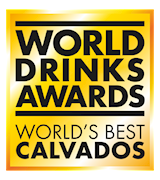
World's Best Calvados - Winner
2020
TasteAtlas food rankings are based on the ratings of the TasteAtlas audience, with a series of mechanisms that recognize real users and that ignore bot, nationalist or local patriotic ratings, and give additional value to the ratings of users that the system recognizes as knowledgeable. TasteAtlas Rankings should not be seen as the final global conclusion about food. Their purpose is to promote excellent local foods, instill pride in traditional dishes, and arouse curiosity about dishes you haven’t tried.











